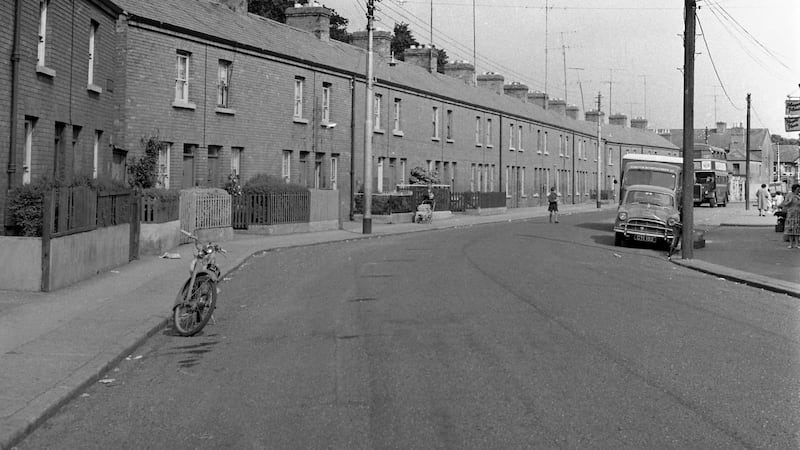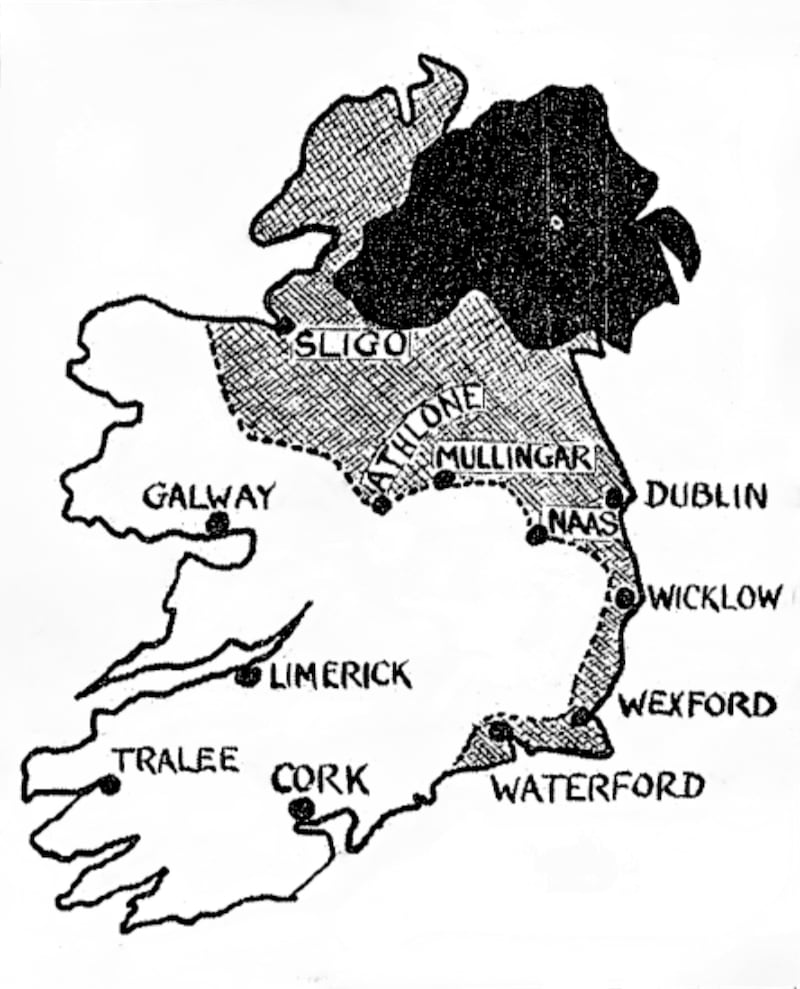Tuesday lunchtime, June 2nd, 1953, Dolan’s pub on Dublin’s Marlborough Street. The pub was unusually packed for a weekday. Many of the patrons were peering awestruck at a snowy image on the brand-new television placed high up on the wall at the end of the bar.
The lunchtime drinkers in Dolan’s this particular Tuesday were not engrossed in football or racing. This was a special day. The Queen of England, Elizabeth II, was being crowned, and there she was, magically rendered in a fuzzy, flickering image on the TV.
As the patrons debated the merits of the new contraption over pints of Guinness and glasses of Paddy, few noticed the arrival of a man in a long white dustcoat.
Just as the crown was held aloft over the head of the young queen, there was a commotion in the pub. The man in the dustcoat forced his way through the crowd to the end of the bar, pulled a hammer out of his coat pocket, reached up and smashed the TV screen with it.
Everything shattered. The blurry image of the queen vanished. Dolan’s fell silent.
‘Get out of my way!’ the television-smasher shouted. ‘Ireland is still free!’
When later charged with malicious damage, the TV smasher, Gearóid O’Broin, described his action as ‘not malicious, but a protest against the denigrating influence of this type of thing’.
Those early televisions viewers in Dolan’s and elsewhere were watching British television for the simple reason that there was no Irish station.
Becoming hooked
In March 1956, an Irish government report on the delivery of a home-grown television service outlined why this was now of urgent importance. With signals from Northern Ireland and Wales available over about half of the Republic, Irish viewers were becoming hooked on British TV programmes.
The report outlined why these were unsuitable for the Irish viewer: “Some are brazen, some ‘frank’ in sex matters, some merely inspired by the desire to exalt the British Royal Family and the British way of life.”
The result was Telefís Éireann, launched by an awkward-looking President de Valera on New Year’s Eve in 1961.

To protect the State’s nascent TV station, the government applied restrictions on the number of connections to a single aerial, effectively prohibiting the rollout of cable television. The skyline of Dublin became crowded with tall aerials, picking up precious signals from the North and Wales.
The island became partitioned, with those in multi-channel land looking down their supposedly more sophisticated, progressive and liberal noses at what they considered to be the poor, deprived and naive residents of single-channel land.
Popular pressure led to restrictions on cable TV being eased so that, by the mid-1980s, thousands of miles of coaxial cable connected homes, expanding multi-channel land to include almost every city and town. There was, however, a distinct geographical pattern to this rollout of cable television. Villages and rural areas were omitted because it was simply uneconomic to roll out miles of cable to serve a handful of houses.
By the early 1980s, a rival technology was emerging – one free of coaxial cables. Enterprising individuals and community groups began to erect ‘deflectors’ which picked up the UK channels, amplified them and then retransmitted them locally over the air.
Disingenuous
The name was somewhat disingenuous, for a ‘deflector’ was a self-made television transmitter and, like any transmitter, required a licence from the Department of Posts and Telegraphs.

While successive ministers declined to provide such licences, many backbench politicians were happy to champion the use of deflectors, with Galway West TD John Donnellan telling the Dáil: “I have five children who love to watch this or that programme thanks to the deflector system.
“Much as we may despise the British for the number of things they do, it has to be said that they transmit some very interesting programmes one might like to view occasionally. Therefore it is necessary that we in the west have the same access to television programmes as those people living in the Dublin area.”
The debating point was no longer about the appropriateness of British television for delicate Irish sensibilities, but between those who regarded deflectors as a wonderful model of community-based self-help and those who saw them as prime examples of rural lawlessness.
The issue was particularly contentious in Donegal South-West, where in the 1997 general election local man Tom Gildea was elected to the Dáil with a primary objective of retaining the deflector system.
The politics of bringing foreign media to Irish screens was no longer confined to smashing a television in a Dublin pub; it was now affecting who governed the country.
The problem of providing multi-channel television across the State was eventually solved for the Irish government by the British, in the form of Sky’s satellite TV platform. By 2003 almost every home in Ireland could enjoy crystal-clear reception of the main UK networks.
Greater bandwith
Satellite did not spell the end of the cable TV systems, however. Thanks to physics, coaxial cables offer far greater bandwidth than the copper pair used in traditional telephone networks.
As a result, those coaxial cables laid around the homes of our cities and towns to pipe Coronation Street and Match of the Day now also carry high-speed broadband direct to 400,000 homes.
A large part of this demand for broadband is the growth of streaming services such as Netflix and Disney+. Meanwhile rural Ireland, while now awash with TV channels thanks to Sky, is stuck waiting for the rollout of fibre to bring high-speed broadband.
The trend towards streaming services accelerated in 2020, when people became confined to home for long periods thanks to the Covid-19 pandemic, giving Netflix an estimated market share of two-thirds of the Irish population. One of the most popular Netflix series during lockdown was The Crown, a historical drama series about the reign of Queen Elizabeth II.
Unlike in 1953, however, there were no press reports of television screens being smashed due to the appearance of the British monarch.
Connecting a Nation by Deryck Fay is published by UCD Press












